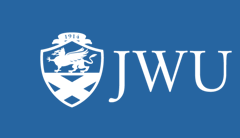To download dissertations and theses, please click on the appropriate "Download" button for your campus to log in and be e-verified. When you reach the "Sign into your JWU email" page, enter your JWU username and password.
Non-JWU users: Please talk to your librarian about requesting this dissertation through interlibrary loan.
Relationship between educational spending and student achievement in Rhode Island public schools
Abstract
This research study investigated the relationship between educational spending and student achievement in Rhode Island public schools. School districts are plagued by a myriad of financial shortcomings. The most pronounced of which is the dependence on local property taxes. Concurrently, the state is raising the standard for student achievement expectations. Educators are clamoring for additional resources in order to comply with this lofty decree. In the past 30 years per pupil spending has practically doubled (Kafer, 2004), while test scores as measured by NAEP (National Assessment of Educational Progress) and SAT (Scholastic Aptitude Tests) have not increased (Hanushek, 1989). Educators ask if increased funding will lead to improved student achievement. The literature suggests that there are unanswered questions related to the relationship among educational spending, student achievement, community wealth, demographics, and effort to support learning. The overall research question addressed in this study is: "Is there a relationship between educational spending and student achievement?" The population includes the 31 school districts that have public high schools in the state of Rhode Island. There are 42 public high schools included in this study. The research design was quantitative, ex post facto. Five variables were quantified: achievement (i.e., proficiency on grade 10 assessments), educational spending (i.e., total district expenditures per pupil), educational effort (i.e., extent to which a district is taxed in relation to the rest of the state), wealth (i.e., amount of taxable property wealth), demographic setting (i.e., dividing the districts into three categories: urban, urban ring and suburban). Data was analyzed utilizing a Pearson-Product-Moment Correlation, a 1-way ANOVA, and a multiple regression analysis. Findings indicate that there was no significant correlation found between spending and achievement, significant negative correlation between effort and achievement, significant positive correlation between wealth and achievement, and significant negative correlation found between wealth and effort. Also there were significant differences found between all demographic areas (urban, urban ring and suburban communities) with regard to achievement. In multiple regression of achievement within the aforementioned variables, demographics explained most of the variance and wealth (and in the case of mathematics, also spending) explained the remainder.
Subject Area
School finance|School administration
Recommended Citation
Stringfellow, Kristen E, "Relationship between educational spending and student achievement in Rhode Island public schools" (2007). Dissertation & Theses Collection. AAI3270298.
https://scholarsarchive.jwu.edu/dissertations/AAI3270298

